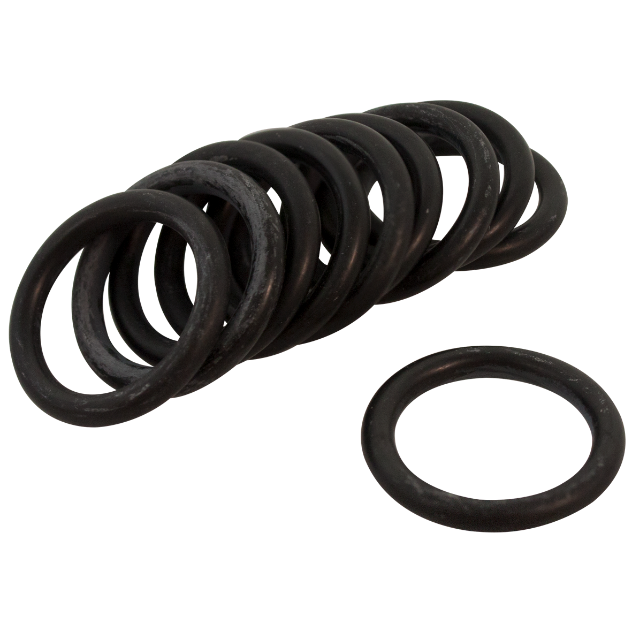

An O-ring, also known as a toric seal, is a loop of elastomer with a round cross-section, designed to be seated in a groove and compressed during assembly between two or more parts, creating a seal at the interface.
O-rings are one of the most common seals used in machine design because they are inexpensive, easy to make, reliable, and have simple mounting requirements. They can seal tens of mega Pascal’s (thousands of psi) of pressure.
Applications:
O-rings may be used in static applications or in dynamic applications where there is relative motion between the parts and the O-rings. Dynamic examples include rotating pump shafts and hydraulic cylinder pistons.
The rubber O-ring materials could be NR, NBR, neoprene, EPDM, silicone, FKM, etc. Below are some typical O-rings made from part of the rubber material varieties available from us.
NBR rubber O-ring
NBR (Nitrile) rubber has good resistance to petroleum oils, aromatic hydrocarbons, mineral oils, vegetable oils, and many acids. It also has good elongation properties as well as adequate resilience, tensile and compression set.
Silicone rubber O-ring
Silicone rubber is chemically extremely stable and suitable for use with many acids and alkalis. It resists to oil, ozone, oxidation, ultraviolet light, high temperature and weathering in general.
FKM rubber O-ring
FKM (Viton) rubber has excellent resistance to oil, flame, chemical corrosion, weathering and aging. It resists a wide variety of corrosive fluids at elevated temperatures while retaining their mechanical properties.
Typical Specifications:
| Style | Normal Color | Density | Tensile strength | Elongation at break | Compression set | Hardness |
| A | Black | 1.25g/cm3 | ≥14Mpa | ≥250% | —– | 70±5 Shore A |
| B | Red, black | 1.25g/cm3 | ≥8Mpa | ≥250% |
≤30% (150°C, 24h) | 70±5 Shore A |
| C | Black, brown | 2.0g/cm3 | ≥10Mpa | ≥150% |
≤30% (150°C, 24h) | 75±5 Shore A |
